 Dandelion greens
Dandelion greens  EATING WILD IN EASTERN CANADA A GUIDE TO FORAGING THE FORESTS, FIELDS, AND SHORELINES JAMIE SIMPSON
EATING WILD IN EASTERN CANADA A GUIDE TO FORAGING THE FORESTS, FIELDS, AND SHORELINES JAMIE SIMPSON 

 Copyright 2018, Jamie Simpson All rights reserved. No part of this book may be reproduced, stored in a retrieval system or transmitted in any form or by any means without the prior written permission from the publisher, or, in the case of photocopying or other reprographic copying, permission from Access Copyright, 1 Yonge Street, Suite 1900, Toronto, Ontario M5E 1E5. Nimbus Publishing Limited 3660 Strawberry Hill St., Halifax, NS, B3K 5A9 (902) 455-4286, nimbus.ca Printed and bound in Canada NB1320 Design: Kate Westphal, Graphic Detail Library and Archives Canada Cataloguing in Publication Simpson, Jamie, 1974-, author Eating wild in Eastern Canada : a guide to foraging the forests, fields, and shorelines / Jamie Simpson. Issued in print and electronic formats. ISBN 978-1-77108-598-4 (softcover). ISBN 978-1-77108-599-1 (HTML) 1.
Copyright 2018, Jamie Simpson All rights reserved. No part of this book may be reproduced, stored in a retrieval system or transmitted in any form or by any means without the prior written permission from the publisher, or, in the case of photocopying or other reprographic copying, permission from Access Copyright, 1 Yonge Street, Suite 1900, Toronto, Ontario M5E 1E5. Nimbus Publishing Limited 3660 Strawberry Hill St., Halifax, NS, B3K 5A9 (902) 455-4286, nimbus.ca Printed and bound in Canada NB1320 Design: Kate Westphal, Graphic Detail Library and Archives Canada Cataloguing in Publication Simpson, Jamie, 1974-, author Eating wild in Eastern Canada : a guide to foraging the forests, fields, and shorelines / Jamie Simpson. Issued in print and electronic formats. ISBN 978-1-77108-598-4 (softcover). ISBN 978-1-77108-599-1 (HTML) 1.
Wild foodsAtlantic Provinces. 2. Wild plants, EdibleAtlantic Provinces. 3. Seafood gatheringAtlantic Provinces. 4.
Cooking (Wild foods). 5. Cookbooks. I. Title. TX823.S52 2018 641.3009715 C2017-907979-4 C2017-907980-8 Nimbus Publishing acknowledges the financial support for its publishing activities from the Government of Canada through the Canada Book Fund (CBF) and the Canada Council for the Arts, and from the Province of Nova Scotia.
We are pleased to work in partnership with the Province of Nova Scotia to develop and promote our creative industries for the benefit of all Nova Scotians. To my mum, who gave me free rein (benign neglect?) to roam woods and shorelines as a kid, gamely cooked rabbits, grouse, and a porcupine that I brought home, and once made me periwinkle pizza.  Beach peas
Beach peas  Table of Contents Acknowledgements 11 Introduction 13 Chapter 1 | Forests and Edges: Fungi, Trees, Shrubs, and a Few More 19 Part 1: Fungi Chaga 21 Chanterelle 23 Black Trumpet 25 Winter Chanterelle 26 Matsutake 27 Oyster Mushroom 28 Bolete 29 Chicken-of-the-Woods 30 Lobster Mushroom 31 Part 2: Trees, Shrubs, and Other Plants of the Forest and its Edges Conifer Tips and Teas: Spruce, Balsam Fir, Pine, and Hemlock 35 Red Oak Acorns, Beech Leaves and Nuts, and Maple Leaves 38 Highbush Cranberry 40 Wild Raisin 41 Common Elderberry 42 Wild Apple 44 Serviceberry 46 Chokecherry and Pin Cherry 47 Mountain Ash 49 Staghorn Sumac 50 Hawthorn 51 Cucumber Root 52 Bunchberry 53 Wintergreen 54 A Professional Forager: An Interview with Fred Dardenne 55 Chapter 2 | Fields, Marshes, Rivers, and Bogs 57 Fiddlehead 59 Cattail 63 Cranberry and Lingonberry 64 Huckleberry 66 Blueberry 68 Blackberry and Raspberry 69 A Bevy of Tea Plants 71 Cloudberry 74 Dandelion 75 Japanese Knotweed 78 Stinging Nettle 80 Wild Rose 81 Jerusalem Artichoke 83 Coltsfoot 85 Lambs Quarters 86 Groundnut 87 Plantain 88 Grape 89 Live-forever 91 An Interview with Chef Jakob Lutes, Port City Royal 92 Chapter 3 | Seashore and Intertidal Areas 95 Part 1: Sea Plants Goose Tongue 97 Sea-Rocket 98 Beach Pea 99 Sea Spinach 100 Crowberry 101 Juniper 102 Bayberry 103 Sea Blite 105 Glasswort 107 Scotch Lovage 108 An Interview with Bryan Picard, The Bite House 109
Table of Contents Acknowledgements 11 Introduction 13 Chapter 1 | Forests and Edges: Fungi, Trees, Shrubs, and a Few More 19 Part 1: Fungi Chaga 21 Chanterelle 23 Black Trumpet 25 Winter Chanterelle 26 Matsutake 27 Oyster Mushroom 28 Bolete 29 Chicken-of-the-Woods 30 Lobster Mushroom 31 Part 2: Trees, Shrubs, and Other Plants of the Forest and its Edges Conifer Tips and Teas: Spruce, Balsam Fir, Pine, and Hemlock 35 Red Oak Acorns, Beech Leaves and Nuts, and Maple Leaves 38 Highbush Cranberry 40 Wild Raisin 41 Common Elderberry 42 Wild Apple 44 Serviceberry 46 Chokecherry and Pin Cherry 47 Mountain Ash 49 Staghorn Sumac 50 Hawthorn 51 Cucumber Root 52 Bunchberry 53 Wintergreen 54 A Professional Forager: An Interview with Fred Dardenne 55 Chapter 2 | Fields, Marshes, Rivers, and Bogs 57 Fiddlehead 59 Cattail 63 Cranberry and Lingonberry 64 Huckleberry 66 Blueberry 68 Blackberry and Raspberry 69 A Bevy of Tea Plants 71 Cloudberry 74 Dandelion 75 Japanese Knotweed 78 Stinging Nettle 80 Wild Rose 81 Jerusalem Artichoke 83 Coltsfoot 85 Lambs Quarters 86 Groundnut 87 Plantain 88 Grape 89 Live-forever 91 An Interview with Chef Jakob Lutes, Port City Royal 92 Chapter 3 | Seashore and Intertidal Areas 95 Part 1: Sea Plants Goose Tongue 97 Sea-Rocket 98 Beach Pea 99 Sea Spinach 100 Crowberry 101 Juniper 102 Bayberry 103 Sea Blite 105 Glasswort 107 Scotch Lovage 108 An Interview with Bryan Picard, The Bite House 109  Part 2: Seaweeds, a.k.a. Sea Vegetables Irish Moss 113 Dulse 115 Sea Lettuce 116 A Tangle of Kelps: Sugar Kelp, Winged Kelp, Oar Kelp 118 Part 3: A Gastropod, a Cephalopod, Some Bivalves, and a Trio of Fishes Periwinkle 123 Northern Shortfin Squid 125 Soft-Shell Clam 128 How to Bake Clams on a Beach 131 Razor Clam 132 Quahog 134 Blue Mussel 135 Sea Urchin 137 A Trio of Ocean Fish: Mackerel, Pollock, and Flounder 139 An Interview with George Smith, Dancing River Sprite 142 Bibliography 147 Index Soft-shell clams
Part 2: Seaweeds, a.k.a. Sea Vegetables Irish Moss 113 Dulse 115 Sea Lettuce 116 A Tangle of Kelps: Sugar Kelp, Winged Kelp, Oar Kelp 118 Part 3: A Gastropod, a Cephalopod, Some Bivalves, and a Trio of Fishes Periwinkle 123 Northern Shortfin Squid 125 Soft-Shell Clam 128 How to Bake Clams on a Beach 131 Razor Clam 132 Quahog 134 Blue Mussel 135 Sea Urchin 137 A Trio of Ocean Fish: Mackerel, Pollock, and Flounder 139 An Interview with George Smith, Dancing River Sprite 142 Bibliography 147 Index Soft-shell clams  Bayberry Acknowledgements Thanks go to my botanist friend (and rock-climbing adventure partner) Rich Lapaix for checking the botanical names of plants in this book. Any remaining errors are mine. Thanks go to friends Alain Belliveau, Christopher Majka, Dan Hutt, and Jennifer MacLatchy for generously contributing photographs, advice, and information.
Bayberry Acknowledgements Thanks go to my botanist friend (and rock-climbing adventure partner) Rich Lapaix for checking the botanical names of plants in this book. Any remaining errors are mine. Thanks go to friends Alain Belliveau, Christopher Majka, Dan Hutt, and Jennifer MacLatchy for generously contributing photographs, advice, and information.
Thanks also to my partner, Eleanor, for contributing photographs, encouraging foraging adventures, and sportingly sampling many wild foods. A special thank you goes to the many friends who make foraging trips fun and meaningful. Finally, I thank Nimbus Publishing for seeing merit in a book about wild edibles, and Kate Kennedy for her expert and artful editing skills.  Highbush cranberry Introduction A lazy December morning found my partner and me chatting idly with my old friend Wyatt as we lingered over a lobster breakfast. My friend fishes from a small boat on the Passamaquoddy Bay, and hed grabbed three of the previous days catch for our meal. Several cups of coffee after the lobster, we decided a walk was in order to forestall complete laziness.
Highbush cranberry Introduction A lazy December morning found my partner and me chatting idly with my old friend Wyatt as we lingered over a lobster breakfast. My friend fishes from a small boat on the Passamaquoddy Bay, and hed grabbed three of the previous days catch for our meal. Several cups of coffee after the lobster, we decided a walk was in order to forestall complete laziness.
The day was winter grey and spruce green until a shrub heavy with lively red berries caught our attention. Viburnum opulus . Highbush cranberries. Having no basket or sack, I put my toque to use and gathered a hat-full of the partially frozen berries. We tried a few straight from the shrub, our faces puckering a little at their sour juice. Although theyre not a cranberry at all, their cranberry colour and tartness earned them their misnomer.
Our guilt assuaged, we walked home and recommenced our chatting, drinking, and eating. I dropped the clusters of berries into a saucepan with a touch of water and brought them to a gentle simmer before mashing them with a fork. A few minutes more and I dumped the slurry into a colander to let the liquid separate from the large seeds. On the stove again, I added sugar until the juice was only playfully, seductively tart, and then brought it to the table. Tentatively, Wyatt dipped a little chunk of bread in the red juice. Hmm, better than the fresh berries, he commented.
Eleanor added a little sharp cheddar cheese to her hunk of bread before dipping it. Now were on to something, she said. The sweet and tart of the sauce matched the sharp cheese and the bread mellowed both. Before long we were looking at an empty bowl. Ive been fortunate to share many such moments with friends: finding, cooking, and enjoying everything from periwinkles to partridgeberries, mushrooms to mackerel. Adventurous and tasty, eating wild gives us a new awareness of our natural world.
Next page
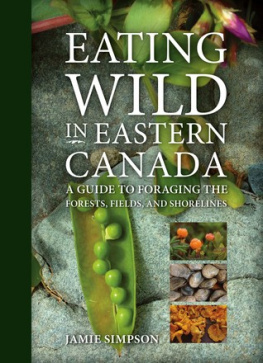
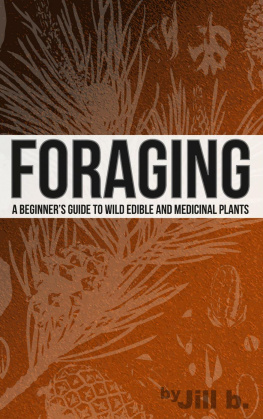

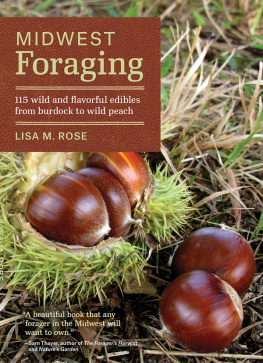
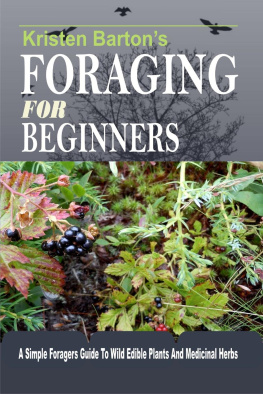

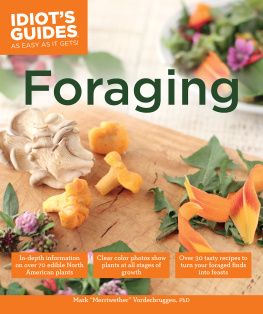
 Dandelion greens
Dandelion greens  EATING WILD IN EASTERN CANADA A GUIDE TO FORAGING THE FORESTS, FIELDS, AND SHORELINES JAMIE SIMPSON
EATING WILD IN EASTERN CANADA A GUIDE TO FORAGING THE FORESTS, FIELDS, AND SHORELINES JAMIE SIMPSON 

 Copyright 2018, Jamie Simpson All rights reserved. No part of this book may be reproduced, stored in a retrieval system or transmitted in any form or by any means without the prior written permission from the publisher, or, in the case of photocopying or other reprographic copying, permission from Access Copyright, 1 Yonge Street, Suite 1900, Toronto, Ontario M5E 1E5. Nimbus Publishing Limited 3660 Strawberry Hill St., Halifax, NS, B3K 5A9 (902) 455-4286, nimbus.ca Printed and bound in Canada NB1320 Design: Kate Westphal, Graphic Detail Library and Archives Canada Cataloguing in Publication Simpson, Jamie, 1974-, author Eating wild in Eastern Canada : a guide to foraging the forests, fields, and shorelines / Jamie Simpson. Issued in print and electronic formats. ISBN 978-1-77108-598-4 (softcover). ISBN 978-1-77108-599-1 (HTML) 1.
Copyright 2018, Jamie Simpson All rights reserved. No part of this book may be reproduced, stored in a retrieval system or transmitted in any form or by any means without the prior written permission from the publisher, or, in the case of photocopying or other reprographic copying, permission from Access Copyright, 1 Yonge Street, Suite 1900, Toronto, Ontario M5E 1E5. Nimbus Publishing Limited 3660 Strawberry Hill St., Halifax, NS, B3K 5A9 (902) 455-4286, nimbus.ca Printed and bound in Canada NB1320 Design: Kate Westphal, Graphic Detail Library and Archives Canada Cataloguing in Publication Simpson, Jamie, 1974-, author Eating wild in Eastern Canada : a guide to foraging the forests, fields, and shorelines / Jamie Simpson. Issued in print and electronic formats. ISBN 978-1-77108-598-4 (softcover). ISBN 978-1-77108-599-1 (HTML) 1. Beach peas
Beach peas  Table of Contents Acknowledgements 11 Introduction 13 Chapter 1 | Forests and Edges: Fungi, Trees, Shrubs, and a Few More 19 Part 1: Fungi Chaga 21 Chanterelle 23 Black Trumpet 25 Winter Chanterelle 26 Matsutake 27 Oyster Mushroom 28 Bolete 29 Chicken-of-the-Woods 30 Lobster Mushroom 31 Part 2: Trees, Shrubs, and Other Plants of the Forest and its Edges Conifer Tips and Teas: Spruce, Balsam Fir, Pine, and Hemlock 35 Red Oak Acorns, Beech Leaves and Nuts, and Maple Leaves 38 Highbush Cranberry 40 Wild Raisin 41 Common Elderberry 42 Wild Apple 44 Serviceberry 46 Chokecherry and Pin Cherry 47 Mountain Ash 49 Staghorn Sumac 50 Hawthorn 51 Cucumber Root 52 Bunchberry 53 Wintergreen 54 A Professional Forager: An Interview with Fred Dardenne 55 Chapter 2 | Fields, Marshes, Rivers, and Bogs 57 Fiddlehead 59 Cattail 63 Cranberry and Lingonberry 64 Huckleberry 66 Blueberry 68 Blackberry and Raspberry 69 A Bevy of Tea Plants 71 Cloudberry 74 Dandelion 75 Japanese Knotweed 78 Stinging Nettle 80 Wild Rose 81 Jerusalem Artichoke 83 Coltsfoot 85 Lambs Quarters 86 Groundnut 87 Plantain 88 Grape 89 Live-forever 91 An Interview with Chef Jakob Lutes, Port City Royal 92 Chapter 3 | Seashore and Intertidal Areas 95 Part 1: Sea Plants Goose Tongue 97 Sea-Rocket 98 Beach Pea 99 Sea Spinach 100 Crowberry 101 Juniper 102 Bayberry 103 Sea Blite 105 Glasswort 107 Scotch Lovage 108 An Interview with Bryan Picard, The Bite House 109
Table of Contents Acknowledgements 11 Introduction 13 Chapter 1 | Forests and Edges: Fungi, Trees, Shrubs, and a Few More 19 Part 1: Fungi Chaga 21 Chanterelle 23 Black Trumpet 25 Winter Chanterelle 26 Matsutake 27 Oyster Mushroom 28 Bolete 29 Chicken-of-the-Woods 30 Lobster Mushroom 31 Part 2: Trees, Shrubs, and Other Plants of the Forest and its Edges Conifer Tips and Teas: Spruce, Balsam Fir, Pine, and Hemlock 35 Red Oak Acorns, Beech Leaves and Nuts, and Maple Leaves 38 Highbush Cranberry 40 Wild Raisin 41 Common Elderberry 42 Wild Apple 44 Serviceberry 46 Chokecherry and Pin Cherry 47 Mountain Ash 49 Staghorn Sumac 50 Hawthorn 51 Cucumber Root 52 Bunchberry 53 Wintergreen 54 A Professional Forager: An Interview with Fred Dardenne 55 Chapter 2 | Fields, Marshes, Rivers, and Bogs 57 Fiddlehead 59 Cattail 63 Cranberry and Lingonberry 64 Huckleberry 66 Blueberry 68 Blackberry and Raspberry 69 A Bevy of Tea Plants 71 Cloudberry 74 Dandelion 75 Japanese Knotweed 78 Stinging Nettle 80 Wild Rose 81 Jerusalem Artichoke 83 Coltsfoot 85 Lambs Quarters 86 Groundnut 87 Plantain 88 Grape 89 Live-forever 91 An Interview with Chef Jakob Lutes, Port City Royal 92 Chapter 3 | Seashore and Intertidal Areas 95 Part 1: Sea Plants Goose Tongue 97 Sea-Rocket 98 Beach Pea 99 Sea Spinach 100 Crowberry 101 Juniper 102 Bayberry 103 Sea Blite 105 Glasswort 107 Scotch Lovage 108 An Interview with Bryan Picard, The Bite House 109  Part 2: Seaweeds, a.k.a. Sea Vegetables Irish Moss 113 Dulse 115 Sea Lettuce 116 A Tangle of Kelps: Sugar Kelp, Winged Kelp, Oar Kelp 118 Part 3: A Gastropod, a Cephalopod, Some Bivalves, and a Trio of Fishes Periwinkle 123 Northern Shortfin Squid 125 Soft-Shell Clam 128 How to Bake Clams on a Beach 131 Razor Clam 132 Quahog 134 Blue Mussel 135 Sea Urchin 137 A Trio of Ocean Fish: Mackerel, Pollock, and Flounder 139 An Interview with George Smith, Dancing River Sprite 142 Bibliography 147 Index Soft-shell clams
Part 2: Seaweeds, a.k.a. Sea Vegetables Irish Moss 113 Dulse 115 Sea Lettuce 116 A Tangle of Kelps: Sugar Kelp, Winged Kelp, Oar Kelp 118 Part 3: A Gastropod, a Cephalopod, Some Bivalves, and a Trio of Fishes Periwinkle 123 Northern Shortfin Squid 125 Soft-Shell Clam 128 How to Bake Clams on a Beach 131 Razor Clam 132 Quahog 134 Blue Mussel 135 Sea Urchin 137 A Trio of Ocean Fish: Mackerel, Pollock, and Flounder 139 An Interview with George Smith, Dancing River Sprite 142 Bibliography 147 Index Soft-shell clams  Bayberry Acknowledgements Thanks go to my botanist friend (and rock-climbing adventure partner) Rich Lapaix for checking the botanical names of plants in this book. Any remaining errors are mine. Thanks go to friends Alain Belliveau, Christopher Majka, Dan Hutt, and Jennifer MacLatchy for generously contributing photographs, advice, and information.
Bayberry Acknowledgements Thanks go to my botanist friend (and rock-climbing adventure partner) Rich Lapaix for checking the botanical names of plants in this book. Any remaining errors are mine. Thanks go to friends Alain Belliveau, Christopher Majka, Dan Hutt, and Jennifer MacLatchy for generously contributing photographs, advice, and information. Highbush cranberry Introduction A lazy December morning found my partner and me chatting idly with my old friend Wyatt as we lingered over a lobster breakfast. My friend fishes from a small boat on the Passamaquoddy Bay, and hed grabbed three of the previous days catch for our meal. Several cups of coffee after the lobster, we decided a walk was in order to forestall complete laziness.
Highbush cranberry Introduction A lazy December morning found my partner and me chatting idly with my old friend Wyatt as we lingered over a lobster breakfast. My friend fishes from a small boat on the Passamaquoddy Bay, and hed grabbed three of the previous days catch for our meal. Several cups of coffee after the lobster, we decided a walk was in order to forestall complete laziness.